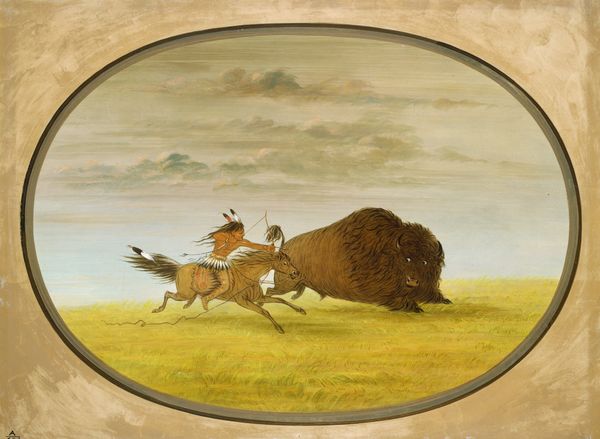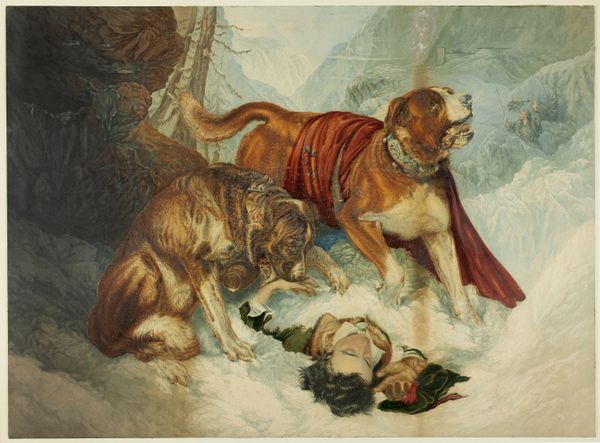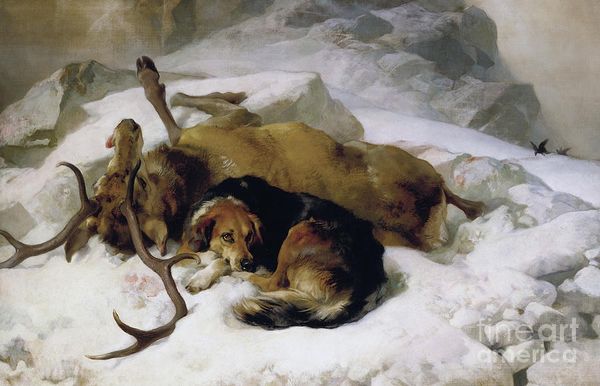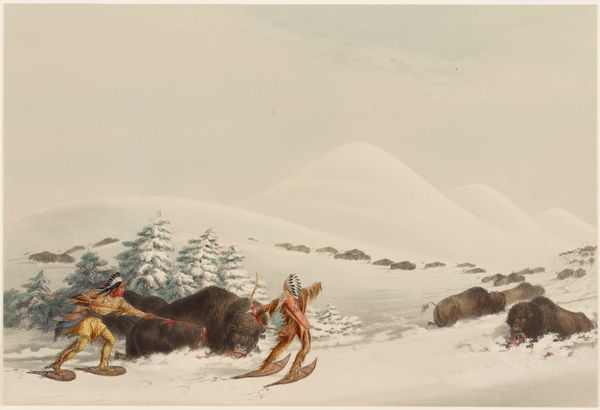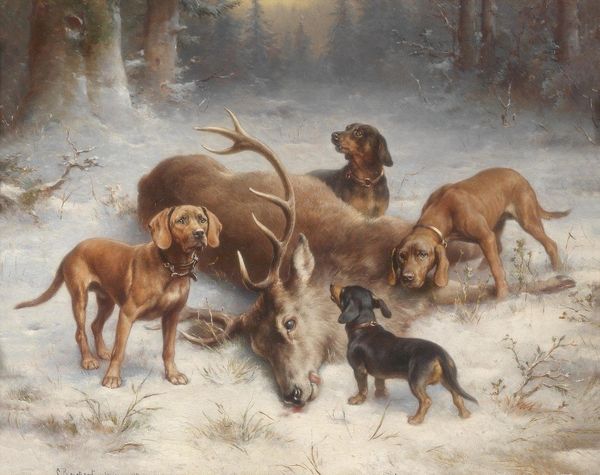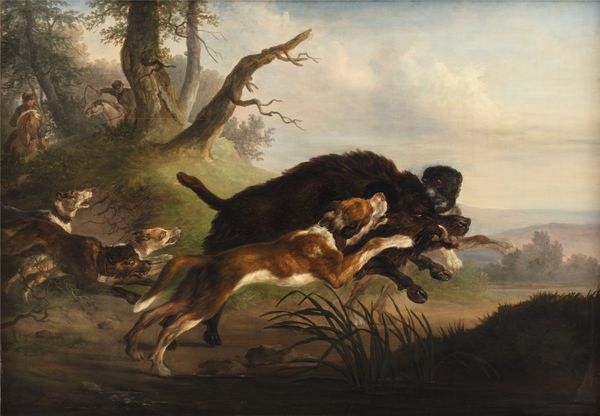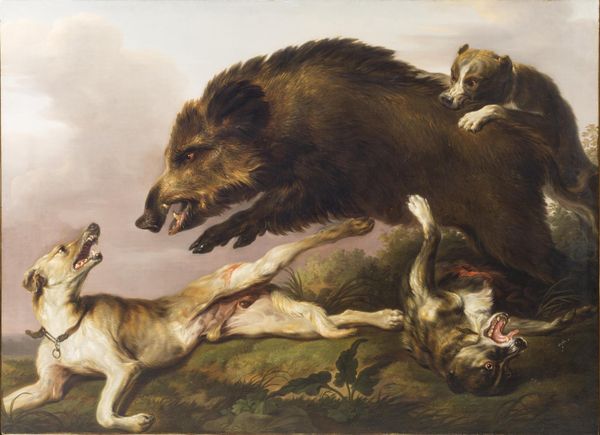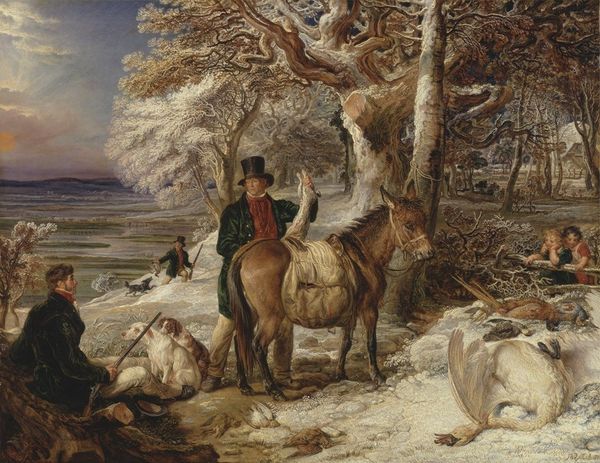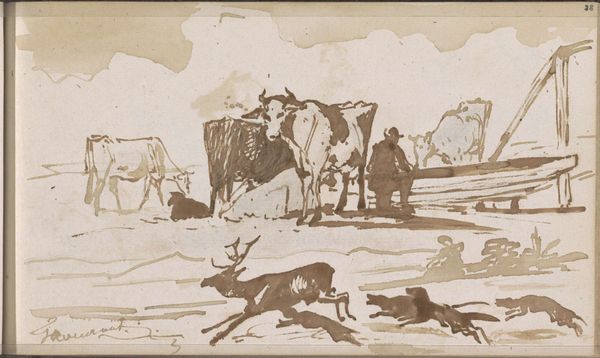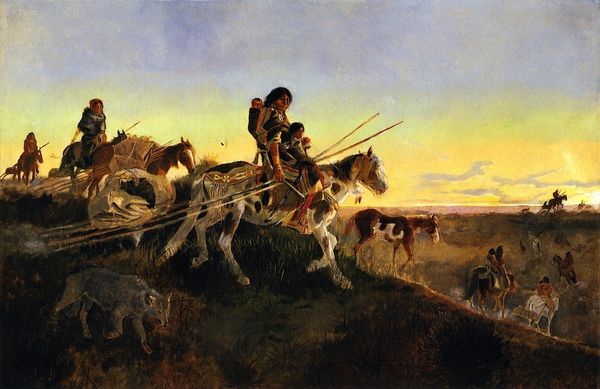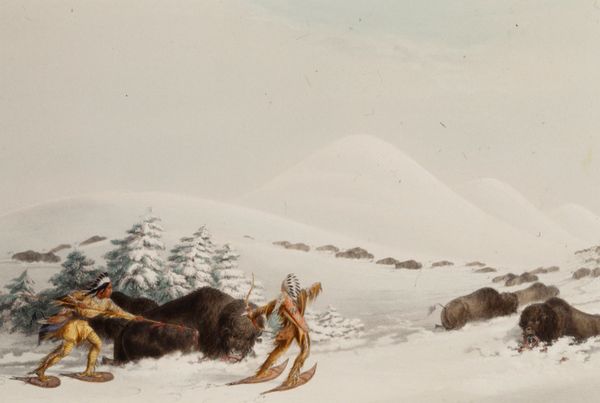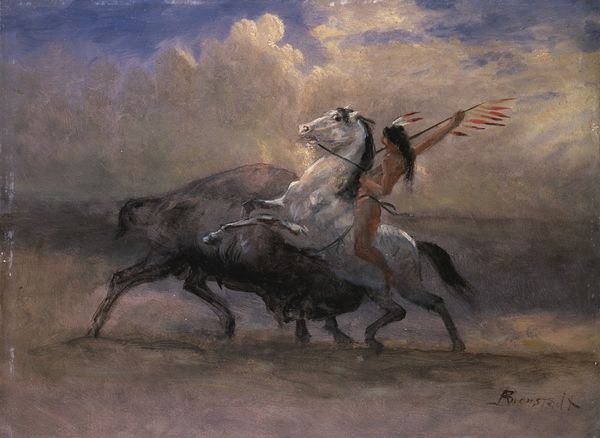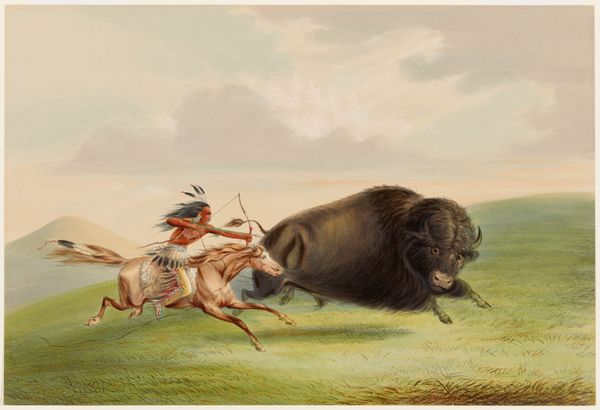
Dimensions: 355 x 505 cm
Copyright: Public domain
Gustave Courbet painted *The Death of the Deer* in France, during the Second Empire. It depicts a hunting scene, a common subject in aristocratic art, but Courbet injects it with a stark realism that challenges traditional heroic depictions. The painting is filled with visual codes, the dying stag symbolizing the decline of the old aristocratic order, while the hunters represent the new bourgeois class asserting its dominance. Consider the social conditions of 19th-century France, marked by rapid industrialization and social upheaval. Courbet, a staunch Republican, uses the canvas to critique the decadence of the ruling class and the brutal nature of their leisure activities. By examining period documents, political cartoons, and hunting manuals, we can decode Courbet's message and fully understand the painting's commentary on the social structures of its time. Art history helps us see how this work challenges the institutional norms of art, using realism to subvert romanticized portrayals of power.
Comments
No comments
Be the first to comment and join the conversation on the ultimate creative platform.
